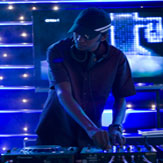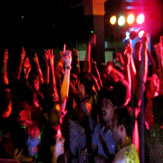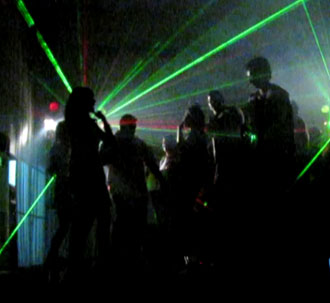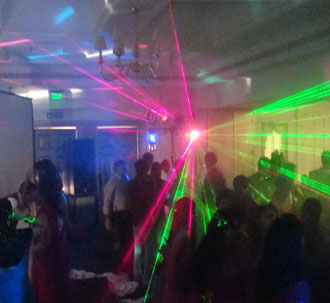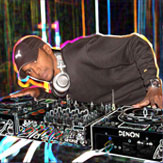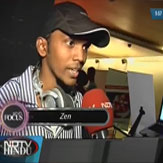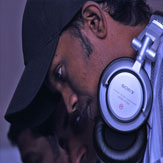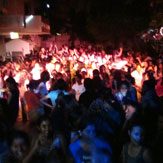
-
With over 7 years in the business
about us.
Dj Zen is one of Chennai's prolific commercial DJ's in the corporate and private event sector... -
services.
We handle all kinds of events that involves music & lights,from a small birthday party to a mega concert. What's fun without Music & Dance... -
We believe we have a unique blend of technical n entertaining skills. Our team has been carefully selected to ensure we can offer services of the highest quality with a high level of experience to back it up...
why us? -
The technicalities and the fun stuff behind the Console.If you wonder what exactly the Dj's do, this section is meant for you...
tips&tricks.
Beatmatching
Beatmatching is the act of synchronizing two musical beats so that they are in phase as well as in time. When mixing music from one track to another, the transition between tracks can appear seamless if the beats are lined up to be in the same time. This section shall explain the basics behind beatmatching.
Nearly all modern dance music will consist of a series of loops, each containing n beats, where n is a power of 2 and n > 0 (n = 2,4,8,16,32,...). Typically a modern dance track will contain a series of 16 beat loops which is broken down into 4 groups of 4 beats and looks like this:

There will be a extra sound or accent (such as a high hat or crash symbol) that occurs on beat 1. This signifies the beginning of a loop and lets the DJ and listener know what position of the loop they are listening to. We will label this first beat as the downbeat as it will become important when mixing. It is critical for a DJ to know when their music is playing a downbeat and when it is not.
The speed of each track is given in BPMs (beats per minute). This refers to how many of these beats (bars in the above diagram) occur in 1 minute of play. If the above diagram represented 1 minute of music, there would be 17 beats played (the 16 beat loop plus the downbeat of the next loop) and this track would be a 17 BPM track. That is an extemely slow example as most modern dance music can range from as low as 80 BPM to 180 BPM with a few exceptions.
Usually two tracks are involved in a mix. The track that the audience is listening to is called the outgoing track as it will be stopped once a new track is played. The track that is about to be played is called the incoming track. While the outgoing track is playing, the DJ will cue up the incoming track and prepare it for play. When ready, the DJ can mix the two tracks together in a seamless manner so that the audience seems to hear only one constant song. During the mix, the DJ can move the musical output completely to the incoming track and remove the outgoing track from the play device. Then the process starts again and the track that was previously the incoming track is now labelled the outgoing track. A new incoming track is used and the music continues without pause.
To mix two tracks together, two things must happen. The two tracks must have the same BPMs and have their downbeats in phase or lined up in time. When both of these conditions are met, the records are synchronized. Below is an example of two beats that have the same BPM but are not in phase:
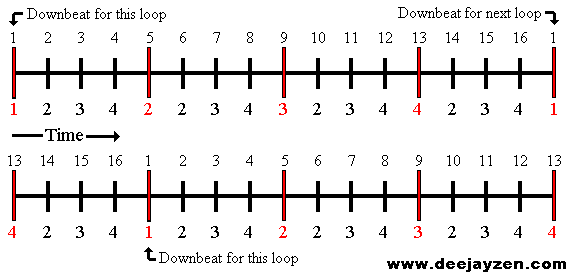
When two beats have the same BPM but are not in phase, they will not sound coherent when played with each other as their downbeats will not correspond with respect to time. There are 15 different ways to have two 16 beat loops out of phase as the downbeat of an incoming track can commence on each of the non downbeats of the outgoing track. Thus, we can say that for a loop with n beats, there are n-1 ways to mix it out of phase.
When two beats do not have the exact same BPM, they will eventually go out of phase as the duration between beats of each track will drift further and further apart. Thus, a DJ can get the phases of two tracks synchronized but they will soon unsynchronize themselves as the beat of the incoming record drifts. The following is an example of an incoming beat that has a slower BPM and thus, falls out of phase with the outgoing beat. The slower beat is on the bottom.
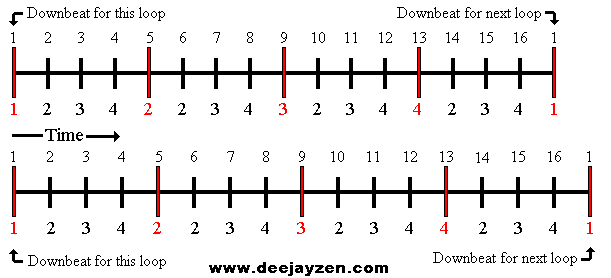
When two beats are in phase and have the same BPM, they should be aligned like this:

Let n be a power of 2 and n > 0 (eg. n = 2,4,8,16,32,...).
Let m be a power of 2 and m > 0 (eg. m = 2,4,8,16,32,...).
It is possible to mix any loop with n beats with any other type of loop that has m beats. To do this, one only has to line up the downbeats to occur at the same time. A 4 beat loop will have 4 downbeats in the same time that a 16 beat loop has one downbeat. Thus we can say that any loop consisting of n beats will be mixable with any other loop consisting of m beats as well.
Analysis
In order to beatmatch, the DJ must use two ears, one listening to the track that the audience is hearing and one listening to the upcoming track. This will require spliting one's attention to accomodate two audio inputs and organizing how things should sound. Most DJs focus on the outgoing track and force the incoming track to follow the beat pattern of the outgoing track. It is common to see a DJ tapping his or her foot to the outgoing track. They are essentially concentrating on the beat of the outgoing track when they do this. Then they cue the incoming track, initializing it to start on a downbeat. When the next downbeat of the outgoing track occurs, they start the incoming track so that the downbeats match. Next they quickly adjust the BPMs of the incoming track so that the beats remain in a constant state of synchronization. This action requires manipulating the speed of the incoming track which requires a device that supports altering the tempo of the track.
Beatmatching involves two procedures. The DJ must start the incoming track at the correct point (a downbeat) and adjust the BPMs accordingly (either faster or slower). Altering the BPMs of a track is a one dimensional continuous task with two directions: faster or slower. It requires great precision as two beats must have the same precise BPMs in order to remain synchronized. A slight variation in BPMs will eventually result in unsynchronized tracks. Once an incoming track is cued to begin on a downbeat, starting the track is optimally a one dimensional binary task (whose modes are playing or stopped). However, most physical devices do not support an instant start and instead take a small amount of time to bring the track to its designated BPMs. Thus the DJ must provide a "push" to the track in order to make sure that its downbeat matches that of the outgoing track. Thus starting a track and putting it in play mode is a one dimensional continuous task that depends on the speed at which the DJ pushes the track.




